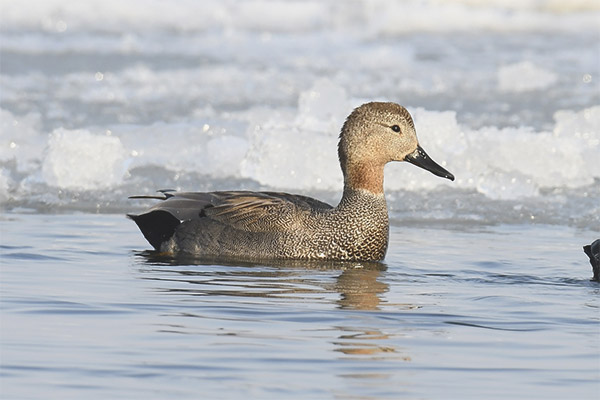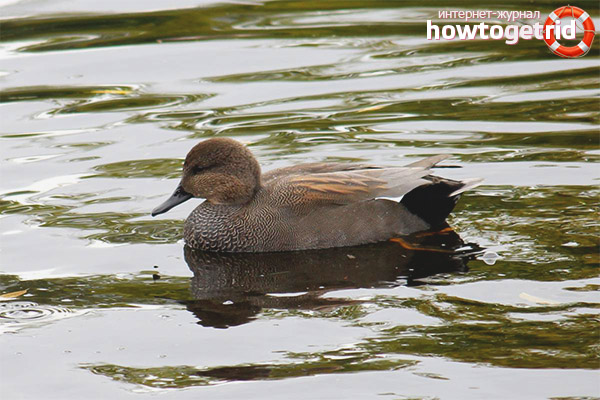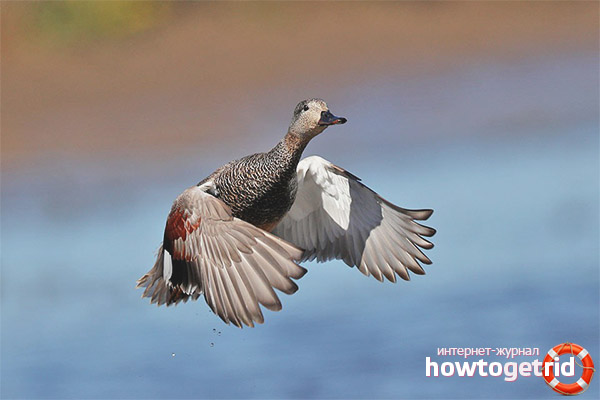The content of the article
Among the whole variety of the duck family, gray morning is popular, which is called seruha. The represented individuals live presumably in the southern part of our country, so there they can be found in all its diversity. Some ignorant “experts” confuse individuals with other species of ducks (for example, mallards or pintails). In fact, between the categories presented there are differences, including external data, dimensions, behavioral features, etc.
Description - how the gray duck differs from the relatives
- Since gray ducks are often confused with themselves, it makes sense to consider the differences of these pets from other possible ones. People as they do not call these individuals: half-marshmallows, serum, seroschka, seed and so on.
- For example, the size of the mallard is larger, while the gray duck hardly oversteps its borders by 1 kg.
- The name “seruha” alone should tell you that the bird is famous for its characteristic gray color. The mallard is brownish or rather multifaceted. It contains reddish, flesh-colored, brownish shades. The body weight of such individuals is twice that, that is 2 kg.
- The represented individuals are almost all gray in their structure, only in the area of the wings there are brown outlines. Mallards also consist of a single pattern, which is 1 cm in size by a strip.
- The features of the birds are the presence of white mirrors on the wings. Males are much more than females. However, external data between them are available. Males differ from females in that they often quack, which is what a raven resembles.
- The female has bright transverse stripes, light gray or brown in color. Feathers have brownish blotches, but, as a rule, they concentrate in the area of the neck and wings. Beak and paws yellowish in female individuals, in male representatives the beak is grayish.
- When the mating season begins, the males throw off the old plumage, acquiring a new one. And the female during the incubation of the offspring and completely falls into the period of molting. When the drake changes its feathers, it will look like a duck.
- Twice a year presented birds molt. The first time - in the summer, the second time - in the winter. Even during the molting period, ducks can fly, but try to protect themselves, therefore they hide in reeds or tall grass.
- When they first mentioned these birds, they proved that they are derived from sickle ducks. It happened in 1758, opened the look of Carl Pinay.
Habitat and food
- Hunters who go to Seruh with a video gun, argue that it is possible to meet representatives of this family in the southern and eastern parts of the CIS countries. There is also a high probability that these individuals will meet in the North Atlantic on its islands.
- Relatively recently discussed birds began to build nests in European countries on the western side. In the expanses of our country, they are found in the forest-steppe. Birds living in Russia go to Europe for wintering and not further.
- When migration to warmer climatic regions is planned, it is carried out in numerous flocks. Birds always stop at slowly flowing water sources, such as ponds, water bodies or lakes. Also feathered friends do not mind to stay on the marshland. In any case, they always choose a water source with a minimum of salt.
- Since serugs love to feast on plant food, they need to have more algae and other grass in their habitat. Only when they begin to multiply are they introduced into the daily diet of small fish, insects, and mollusks.
- Gray ducks dive for fish, but not too deep. Usually they catch prey that lives near the water surface. Birds eat cereals, whether wheat or oats.
Nesting and breeding
- When the male is ready to mate, he proudly pulls the neck and "cracks". It looks luxurious with a flowing tail and its habits.
- The mating season in these ducks originates from wintering. From warm places feathery friends arrive in couples. Chicks appear once a year,the mating process itself is carried out in the water space.
- Ducks are preparing for the construction of nests after arrival, rested and ready to continue the race. First, the expectant mother pulls out a hole, then brings grass and sprinkles with her plumage. The size of the nest goes about 20 to 20 cm at a depth of 15 cm.
- In some cases, the ready-to-breed pair occupies nests that remain abandoned in the trees. This is due to the late spill of the rivers, as one of the reasons.
- During laying, the birds in question can often produce up to 10-11 eggs. In rare cases, this number is greater. Eggs are small in size with olive color. The female lays only 1 egg every day. Only after demolishing everything, does she set about hatching.
- Only in rare cases, the female is distracted in search of food. After about a month, the chicks begin to be born. The males of this species belong to nomads by nature. Therefore, they do not particularly care about their offspring.
- Often drakes adhere to regular night flights. They begin to look for food, and then in an unhurried rhythm they go to warm countries for wintering.In parallel, they begin re-molting. At this time, individuals begin to lose little feathers.
- The same thing happens with the female while hatching eggs. Feathers have time to completely change at the moment when the female is engaged in the younger generation. As a rule, ducklings have their own diet. They love to feast on worms, beetles and crustaceans.
- Birds by nature are cautious, so they try to keep away from dense thickets and forests. As soon as the offspring grows up, the considered individuals try to keep close to water bodies. Juveniles are completely covered in feathers at the age of two months. At the same time, the chicks can already fully fly.
Unique features of the form
- Ducks have a small weight and small size, however, it does not prevent hunters from hunting them. Therefore, gray individuals often become prey, like the rest of the game. Due to the reduction of nesting sites and hunter extermination, the bird population has declined.
- The gray duck is under protection in some regions and is listed in the Red Book. Also considered individuals belong to broods.This means that only 35% of the yolk is present in the egg. The rest is presented in the form of food supply for chicks.
- As a result, after hatching, the chicks can still feed. In addition, they are born already completely sighted. The young growth is able to move, and is covered with thick down. The same group of birds includes chickens, cranes, geese, swans.
Interesting Facts
- In ancient times, the Egyptians were able to domesticate ducks without any problems. In addition, these individuals are most popular in China. Every year in this country about 2 million individuals are raised.
- As for Latin America, in this country almost no one uses the game in question as food.
- Worldwide, there are about 110 species of ducks. Separately, it is worth noting that the quacking of such individuals does not have an echo.
- During the extraction of food and hunting for fish, the presented ducks are capable of diving to a depth of 7 m.
- It is interesting that only female ducks are able to reproduce quacks. Males are not capable of this.
- It is worth knowing that such game has more cervical vertebrae than the giraffe, and this is despite the fact that the ducks have this part of the body shorter.
- When the ducklings are born, they perceive as a mother any creature that they see first. To whom, if the feathers of the bird were not processed in any way, it is impossible to wet them.
Gray ducks have a very beautiful appearance. Due to the reduction of habitats and constant hunting for individuals, the number of this species has greatly decreased. In some regions of our country, game is protected. The males of this species by nature remain nomads. The female is independently engaged in offspring and grows it.
Video: gray duck (Anas strepera)













To send